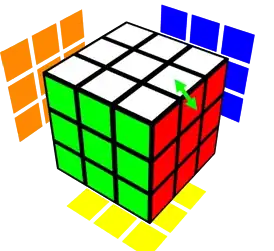As MJD mentioned in the comment, it can be proved that there always has to be an even number (which includes 0) number of edges flipped (and correctly oriented).
If you can prove this, then it will follow that any sub-step state (such as the last layer being unsolved) must have an even number of edges flipped and oriented correctly for all states reachable with legal moves applied to a completely solved cube.
Proof 1
This proof is by far the best proof I have seen so far for edge orientation.
I just uploaded an image to illustrate what Michael Gottlieb meant by a "two 4-cycle" of stickers, if you aren't too savvy with permutation terminology.
Imagine we are doing the move R to a 3x3x3 cube. It will move all pieces in the right slice away from us 90 degrees. If we focus specifically on the edges, we can observe that the move R does the following to the edge stickers.

A 4-cycle is an odd permutation because it requires 3 (an odd number) overlapping 2-cycles (transpositions) to be solved/generated. Two disjoint 4-cycles requires 6 (an even number) 2-cycles to solve/generate.
Similarly, a 2-cycle requires 1 (an odd number) 2-cycle to solve.

If we can flip a single edge, that implies that we can flip any number of edges (one at a time, for example), and thus for the last layer edges of the 3x3x3, we could have either 1 or 3 edges flipped if we could flip a single edge. Therefore all Michael had to address in his proof was to show that we cannot flip a single edge (which is illustrated in the 2-cycle of stickers image above) to handle all cases.
Proof 2
Of course, the oldest "modern" description of these "cube laws" I know of is Ryan Heise's page, but I personally find Michael Gottlieb's proof for edges to be more satisfying than Ryan's.

